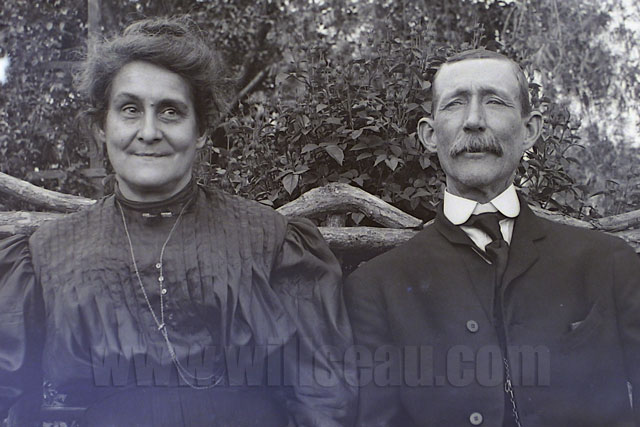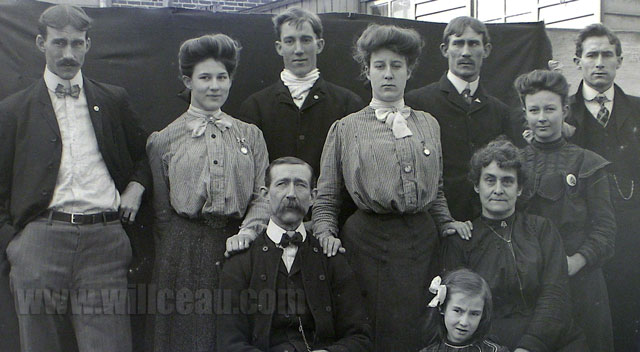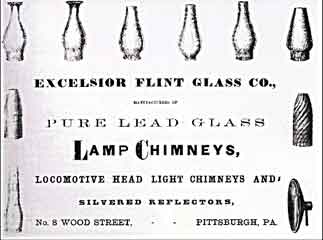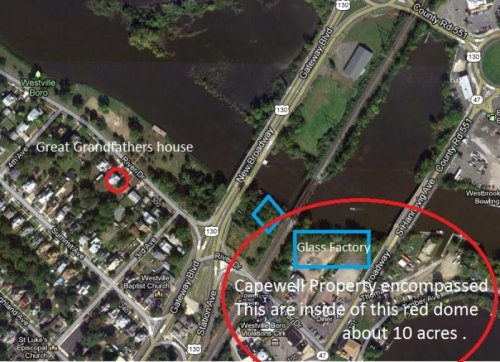surfaceone
Well-Known Member
- Joined
- Dec 9, 2008
- Messages
- 11,161
- Reaction score
- 23
- Points
- 0
I have in my collection a tall footed cut glass that has the word CENTENNIAL engraved in cursive and pressed on opposing sides is a star design with the dates 1776 and 1876. The Centennial Exposition held at Philadelphia in 1876 was the largest show of its type ever seen in the United States up to that point in our young history. I obtained this glass from my Great Grandfather George Barton born in 1885 and who was a neighbor and good friend of one of the Capewells John Batt Capewell (1878 - 1951) a son and grandson of one of the owners of the Westville Flint Glass works. Here is the tall glass.

Hey Steve,
Thank you for showing this wonderful piece, and doggedly chasing down the history behind it. Just from the standpoint of a meaningful historic item being passed down through the generations in your family; it's a great story.
Add to it with your research and history hunting, and the wonderful glass plate negatives of John Batt Capewell.


And, you, sir, have really brought to life generations of Capewells, and brought us photos, through the good works of Joe Williams and Tina Garceau.
Bravo, sir!
Before I get too carried away with this fan letter; How tall is the Centennial Glass?
Exciting as opening day at the great Centennial Exposition, sez moi.

Things genealogical, generally leave me scratching my head, when the families are as large as that of the Capewells, I can't even imagine the chart. [8D] So I'm confused as can be. Did William Henry Capewell go as "Henry Capewell"?
"Some of the other early industries that were founded, and flourished, and then died out through the years, were as follows; a glass manufacturing plant, founded by Henry Capewell, where the railroad power station is located; a grind mill on the banks of Big Timber Creed, where the present race-way flows into the creek; a basket factor: a sawmill; and a doll-mending factory." From.
Have you walked the works? I know that you could talk your way into that power station, if you haven't already. [8D]
Bra-the hell-vo, Steve. I think you have really outdone yourself with this one, and that is saying plenty.
Thanks.
PS: Not Capewell related, I don't think, but... Is there a parallel glass universe in Pittsburgh, and the later Excelsior Flint Glass Works at New Kennsington?
"The City of New Kensington was incorporated November 26,1892. By 1893, the Cold Rolled Steel Company, the Excelsior Flint Glass Works, the Kensington Stove Works, the Kensington Enameling Works, and the Sterling White Lead Company had all located to New Kensington." From. Or is that a complete coincidence?
"John Lowery, was one of nine partners who founded this factory in 1863 (not to be confused with The Excelsior Glass Works). Others included Edward Dithridge, John Flynn and James Lindsay. The company produced a variety of lamp chimneys, lantern globes and locomotive head light chimneys as well as silvered lamp reflectors as shown in The Glass and Crockery Journal advertisement of August 12, 1875. Using innovative techniques and processes, such as the Dithridge oval lamp chimney and Atterbury glass mold pressing, the company was a significant producer of glass in the 1870s. It participated in the 1876 International Exhibition in Philadelphia and won praise for some of its products. At that time the company had 104 employees, and produced $100,000 in sales of glass lamp chimneys, glass jars and silvered reflectors. In the 1880s, it remained a significant producer of products for railroad use, including lantern globes and locomotive headlight chimneys. In the 1890s it was still producing glass and jars, and was listed in the 1899 edition of Seeger and Guernsey's Cyclopaedia of Manufacturers and Products in the US even though the company actually ceased operations sometime prior to 1899.
For more information on the company see Glasshouses and Glass Manufacturers of the Pittsburgh Region 1795-1910, by Jay W. Hawkins (2009) and Pittsburgh Glass 1791-1891, by Lowell Innes (1976)." From.




